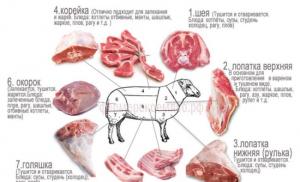Sonya's golden pen life story. Sofia Bluvshtein: photo, biography, children
This woman had a special criminal talent. She played such brilliant combinations that she easily stole a lot of money literally from under the noses of the rich, and at the same time managed not to leave even the slightest trace. Having no education, she knew 5 languages perfectly. Every man could envy her indestructible fortitude and sharpness of mind.
What was she like?
Sheindlya-Sura Solomoniak, and this was the real name of Sofia Ivanovna Blyuvshtein, or Sonya the Golden Hand, was born in 1846 in the town of Powonzki of the then Warsaw district. Her childhood years were spent among traders and buyers of stolen goods - moneylenders, profiteers and smugglers.
The biography of Sonya - the Golden Hand, the photo of which is posted in this article, was full of many events of a criminal nature. According to contemporaries, she was a charming woman, but she did not shine with beauty. She had an extraordinary inner charm that was impossible to resist.
As you know, Sofya Bluvshtein did not receive an education as a child. However, over time, the life she led turned her into almost the most enlightened woman of that era. Aristocrats not only of the Russian Empire, but also of many European countries, without the slightest hesitation, accepted her as a lady of their circle. That is why she could freely travel abroad, where she presented herself as a viscountess, a baroness, or even a countess. At the same time, no one had the slightest doubt about her belonging to high society.
Criminal talent
By the way, a prison photo of the real Sonya, the Golden Hand, has been preserved, as well as police directions used to search for the criminal. They described a woman who was 1.53 cm tall, with a pockmarked face, a wart on her right cheek and a moderate nose with wide nostrils. She was a brunette with curly hair on her forehead, from under which moving eyes looked. She usually spoke impudently and arrogantly.

Sonya Zolotaya - Hand, whose biography was always connected with crime, from the very beginning stood out from the large crowd of scammers, as she had a kind of thief talent. She was a proud, brave and independent adventurer who was not afraid to carry out even the most risky operations. Sonya never started a new scam without calculating possible development situations ahead.
"Career" of a thief
It must be said that Sheindlya-Sura made a name for herself in the criminal field quite early. Future Queen underworld She began her “activity” with petty thefts from third-class carriages when she was approximately 13-14 years old. Along with the rapid construction and development of railway communication, her thieving career was moving uphill. Over time, this talented swindler moved to 1st class compartment carriages.
The story of Sonya the Golden Hand, whose biography is replete with various scams, was written not only on trains. She also engaged in thefts in expensive hotels and luxury jewelry stores not only in Russia, but also in Europe. This always smartly dressed woman, carrying someone else’s passport, settled in the best hotel rooms in Warsaw, St. Petersburg, Moscow and Odessa and carefully studied all the entrances and exits of the building, as well as the location of all corridors and rooms.
Thieves' tricks
Sonya always acted smartly, prudently and cunningly - Golden Pen. Sophia's biography is full of various thieves' "inventions" invented by her. For example, a method called "guten morgen" or "s Good morning». This method hotel thefts were carried out in this way: early in the morning, Sonya, wearing soft felt shoes, quietly made her way into one of the rooms, and while its owner was fast asleep, she took all his cash. But if the guest unexpectedly woke up, he would find a smartly dressed lady in expensive jewelry in his chambers. She, pretending not to notice anyone, began to slowly undress. At the same time, the owner had the impression that the woman mistakenly mistook his apartment for her own. In the end, the thief skillfully feigned embarrassment and apologized sweetly.

As for thefts from jewelry stores, Sonya the Golden Hand was able to distinguish herself here too. The thief's biography knows cases of diamond theft right from under the noses of sellers. One day she went into one of the most expensive jewelry stores. Having asked to see a large diamond, she allegedly accidentally dropped it on the floor. While the salesman, frightened to death, crawled on his knees, looking for the stone, the “customer” calmly left the store. The fact is that the heels of her shoes had holes filled with resin. Thus, by stepping on the diamond, which was stuck to the viscous substance, she pulled off this brilliant scam.
The biography of Sonya - the Golden Hand (photo) also knows such facts when she, walking with her trained pet monkey, went into jewelry stores. Ostensibly choosing gems, she quietly gave one of them to the animal. The monkey either tucked it into his cheek or swallowed it. Arriving home, Sonya after a while took this jewel right out of the pot.
Fair thief
Sonya the Golden Hand, whose biography half consists of various scams, tried never to offend those who are already not rich. She believed that it was not a sin to warm your hands at the expense of very wealthy jewelers, large bankers or rogue traders.
There is one known case when Sonya behaved nobly towards a person who suffered from her so-called activities. One day she accidentally learned from a newspaper article that the woman she had robbed turned out to be the poor widow of a small employee. As it turned out, after the death of her spouse, the victim received a benefit in the amount of 5 thousand rubles. As soon as Sophia recognized her victim in her, she immediately went to the post office and sent it to the poor woman a large amount than it was stolen. In addition, she accompanied her transfer with a letter in which she deeply apologized for her actions and advised him to hide the money better.
Family life
Sheindlya-Sura got married for the first time when she was 18 years old. Her husband was the grocer Isaac Rosenband. By the way, the act of their marriage is still kept in Warsaw. But family life ended quickly - not even a year and a half had passed before she, taking her daughter, fled, taking her husband’s money with her.
In 1868, Sonya married again, this time to Shelom Shkolnik, a rich old Jew. Soon, having robbed the poor guy, she left him for some card sharper. But he didn’t stay long either. Starting from this year and until 1874, the charming thief changed husbands several times until she met the carriage thief and card sharper Michel Blyuvshtein. By the way, she will bear his last name for the rest of her life.

Children of Sofia Bluvshtein
We can say that Sonya the Golden Hand spent most of her life wandering. The biography, into which the children did not fit at all, was absolutely not suitable for a respectable woman and mother. When she gave birth to a daughter, and later another, Sophia did not give up her craft. After Mikhel Bluvshtein was arrested, convicted and sent to serve his sentence at hard labor, she first thought about her “work.” Sonya finally realized that children were a burden for her.
The girls demanded a lot of love and attention, and she could not give them any of it. After her husband's arrest, she was forced to constantly move from place to place. Therefore, the decision was made: to take the children to an orphanage. While they were little, she constantly sent them money.
Some are inclined to believe that the famous thief had four children: a son and three daughters. There is a version that the oldest was Mordoch Bluvshtein, born in 1861. Further daughters are Rachel-Mary, Sura-Rivka Rosenband and Tabbu Bluvshtein. It must be said that the children of Sonya - the Golden Hand are generally very rarely mentioned in publications about her. But still, most often you can read about the last two daughters. It was about them that Sophia Bluvshtein herself spoke to the writer Doroshevich in 1897, when she was already in hard labor. She admitted that she would like to see her two girls, who, as she admitted, were once operetta actresses. It is believed that the daughters of Sonya - the Golden Hand, whose biography remains unknown to this day, were ashamed of their mother, and when they grew up, they did not want to see her at all.
Most researchers are sure that Sophia had only two daughters, and Mordoch and Rachel-Mary are simply impostors. Judge for yourself, if she gave birth to a son in 1861 (by the way, she was only 15 years old then), then his last name would definitely not be Bluvshtein, since Sonya married Michel much later.
Naturally, it is no longer possible to find Sonya’s children. But there could be grandchildren and great-grandchildren of the queen of the underworld, who, most likely, do not even know who their grandmother was.
Love story of Sonya - Golden Handle
The hitherto very successful thief unexpectedly fell in love with a young swindler nicknamed Volodya Kochubchik. His real name was Wolf Bromberg. He was a thin, handsome twenty-year-old card sharper with virtuoso hands and lively eyes. Surprisingly, he had some kind of inexplicable power over Sonya. He constantly extorted large sums of money from her, and, surprisingly, received them. He spent all the money “earned” by his mistress by losing at cards.
Luck finally turned away from the Golden Hand. Sophia has changed a lot: she has become irritable, greedy and even descended to pickpocketing. She now often took unnecessary risks, making mistake after mistake, and finally got caught. There is another version - Volodya Kochubchik himself framed her and handed her over to the police.

Hard labor
After a sensational trial in Moscow, Sofya Bluvshtein was convicted and exiled to Siberia. But soon the thief managed to escape, and all of Russia started talking about her again. She took up her former profession - robbing rich and careless citizens. After one of the robberies, Sonya was caught again. She was sentenced to hard labor and transported to Sakhalin. She tried to escape three times, but all attempts ended in failure. After the second escape she was subjected to cruel punishment- fifteen lashes, and then she was shackled for three long years.
On Sakhalin, Sonya was a real celebrity. It was visited from time to time by ubiquitous journalists, curious foreigners and famous writers. For a fee they were allowed to talk with her. It must be said that she did not like to talk about herself, she lied a lot and was often confused in her memories.
It even became fashionable to take pictures with the legendary thief in a composition: blacksmith, warden and convict woman. It was called “Imprisonment of the notorious Sonya - the Golden Hand” in shackles. One of these photographs was sent to Chekhov by his Sakhalin acquaintance I. I. Pavlovsky. By the way, this photo of the real Sonya - the Golden Hand is still kept in the archives of the State Literary Museum.

End of the road
After serving her sentence, Sofya Bluvshtein was supposed to remain on Sakhalin Island as a free settler. It was even rumored that for some time she ran a café, where she sold alcohol and organized various entertainment events. She got along with repeat offender Nikolai Bogdanov, but life with him turned out to be worse than in hard labor. Therefore, being extremely exhausted and sick, Sophia made the last escape attempt in her life. Naturally, she was no longer able to go far, and soon a convoy found her. She lived for a few more days, after which she died.
Where is Sonya buried - Golden Hand
There are many legends about the death of the famous thief. There is a version that she did not die in hard labor, but lived happily to a ripe old age in Odessa and died only in 1947. According to other assumptions, her death overtook her in Moscow, in 1920, and she rests in the Vagankovskoye cemetery.

The last version is unlikely judging by where Sonya the Golden Hand served her sentence. The biography (the monument allegedly installed on her grave is the work of Italian masters) casts doubt on the fact that she rests here. Initially, the monument looked like this: a thin female figurine carved from white marble, stands under tall forged palm trees. Now, of the entire composition, only the statue has survived, and even that one with its head broken off. It is not known for certain who is buried in this grave, but it is always decorated with fresh flowers and strewn with coins. In addition, the entire pedestal of the monument is literally covered with inscriptions of a criminal nature.
Sofya Bluvshtein lived unusual life. It was as if everything was the other way around: she dreamed of becoming an actress and acting on stage, but instead she staged “performances” in 1st class carriages; there was love, but it did not elevate, but dragged into the pool; constant fear for the future of her daughters, whom she loved, but could not be with them.
According to official court documents, the famous adventuress was born in the town of Powazki, Warsaw province, in 1846. But she herself, having decided to be baptized according to the Orthodox rite in 1899, indicated the city of Warsaw, 1851, as the place and date of birth. The only thing known for certain about Sophia is that she received an excellent education and was fluent in several foreign languages. She also had an incredible artistic gift, which saved her. And then he ruined it.
At the age of 17, Sonya ran away from home with a young Greek man, fleeing the attacks of her evil stepmother. History is silent about what happened to Sophia’s first lover. But it is known that in 1864 in Warsaw she married Isaac Rosenbad and gave birth to his daughter Sura-Rivka. Married life Sonya didn’t like motherhood either: pretty soon she fled to Russia with a certain recruit Rubinstein, leaving her daughter to her husband and not forgetting to finally rob her husband. The role of the pious married lady and Sonya was frankly not suitable for her mother, and therefore two years later she was arrested for the first time for stealing a suitcase from the cadet Gorozhansky, whom she met on the train. Then Sophia managed to convince the court that she took the suitcase by mistake. A certain Rubinstein, apparently, too. Because soon Sonya settled in St. Petersburg and began to rob aristocrats together with a new man - a thief and cheater Mikhail Brener.
It was there, in St. Petersburg, that she invented her own method of robbery and received the nickname Golden Hand: Sophia rented a hotel room, put on soft shoes and sneaked into the rooms of rich guests in search of money and jewelry. If the owner of the room woke up, Sophia would pretend that she had the wrong number and would be very embarrassed. Sometimes she even had sex with her victim, and she did it in highest degree artistic: it never occurred to anyone that the jewelry had “gone” from the room under the peignoir of the charming neighbor.
Popular

However, investigators soon suspected whose hands were responsible for these robberies, and then Sonya left the capital for a while: she married an old rich Jew, Shelom Shkolnik, but, without waiting for an inheritance, she left him and went on an “international tour.” She changed cities and countries and eventually became the leader of her own gang of thieves and a member of the prestigious criminal club in Moscow, the Jacks of Hearts.
In 1871, Sophia married the famous railway thief Mikhel Blyuvshtein and gave birth to two daughters - Tabba and Mikhalina. However, no one knows exactly who the father of Sonya’s daughters really was, because she changed lovers like gloves. As a result, the marriage of the famous swindler fell apart because Bluvshtein felt insulted: it is one thing when your wife cheats on you with a rich thief, and another when with a poor officer, from whom there is nothing to take except footcloths. Mikhel could not stand it and broke up with his wife, but Sophia, it seems, did not lose heart: she was not interested in long relationship with men, and the more lovers there were, the better it was for her.
Exactly until Sophia really fell in love. For real.
The considerably aged Sonya Zolotaya Ruchka moved to Odessa and there she met 18-year-old card sharper Volodya Kochubchik (aka Wolf Bromberg). Kochubchik began his career as a thief as a child, at the age of 8, and managed not only to defraud gullible citizens at bazaars, but also to steal from famous thieves. In addition, Kochubchik’s character did not at all match his biography: he behaved like a loved one and completely spoiled Sissy. In fact, he called Sophia herself “mom” for a long time, which she categorically did not like.
Almost every night Kochubchik would sweep away what Sonya had managed to loot and go play cards. The woman tried to stop her beloved, but in vain: he did not hesitate to scandalize her in public, or even raise his hand to her. Sophia herself, who had previously changed men like gloves, for some reason could not part with her young lover and justified all his antics. Moreover, she tried to steal as much as possible in order to please Kochubchik with another gift.
Meanwhile, Kochubchik himself began to get tired of Sophia herself and of his dependence on her. In addition, the relationship with Sonya became dangerous: trying to steal as much as possible for her beloved, Sonya almost got caught several times and a “tail” grew behind her. So she had to run away, but how could she leave her loved one?
Kochubchik himself made the decision for her: he calmly handed over his already old and completely impoverished (thanks to his efforts) mistress to the police. Sonya was exiled to Sakhalin, and Kochubchik discovered her secret savings, pocketed them and bought himself an estate.
Sonya Golden Hand tried to escape from hard labor in order to meet her young lover again, but she failed. She died of a common cold in 1902 and was buried in the local cemetery.
Biography
There is no exact information about the life of Sophia (Sonya) Solomoniak-Blyuvshtein-Shtendel, since she largely falsified her own biography. According to official court documents, the famous adventuress was born in the town of Powazki, Warsaw province in 1846. However, when baptized according to the Orthodox rite in 1899, she indicated Warsaw, 1851, as the place and date of birth. Got an education, knew a few foreign languages. She had the gift of artistry and theatrical transformation.
Married several times, most recently official husband there was a card sharper Mikhail (Mikhel) Yakovlevich Blyuvshtein, with whom she had two daughters. She was involved in organizing large-scale thefts, which gained fame due to the adventurous component, the tendency to mystify and the theatrical change of appearance of the swindler. Among the surnames she used throughout her life were Rosenbad, Rubinstein, Shkolnik and Briner (or Brener) - the surnames of her husbands.
In the 1860-70s, she was engaged in criminal activities in large Russian cities and in Europe.
Repeatedly detained by the police different states, however, without serious consequences.
| This is a small, thin, already graying woman with a rumpled, old woman’s face. She has shackles on her hands: on the bunk there is only a fur coat made of gray sheepskin, which serves as both warm clothing and a bed for her. She walks around her cell from corner to corner, and it seems that she is constantly sniffing the air, like a mouse in a mousetrap, and she has a mouse-like expression on her face. Looking at her, I can’t believe that just recently she was beautiful to such an extent that she charmed her jailers... |
Shackling Sonya Golden Hand in shackles, 1881
After World War II, the grave was lost.
Children
Known about three daughters Sofia Bluvshtein:
- Sura-Rivka Isaakovna (née Rosenbad) (born 1865) - abandoned by her mother, remained in the care of her father, Isaac Rosenbad, in the town of Powązki, Warsaw province, fate unknown.
- Sofya Mikhailovna (née Bluvshtein) (born 1875) - operetta actress in Moscow.
- Antonina Mikhailovna (née Bluvshtein) (born 1879) - operetta actress in Moscow.
In art
- - silent film “Sonka the Golden Hand” (original title “The Adventures of the famous adventuress Sofia Bluvshtein”) directed by Vladimir Kasyanov and Yuri Yuryevsky. The role of Sofia Bluvshtein was played by Nina Goffman. The film has been preserved without captions. The negative is stored in
Who should a Jewish woman be in Russia at the end of the century before last in order to become everyone’s favorite, so that before any television she would be recognized by sight, so that the first domestic series of eight silent episodes would be filmed about her life, so that cards with her image would sell out like newspapers, in which articles about her sometimes took up more than one page? A talented thief.
The human imagination "Sonka - the golden pen" shocked the late XIX century. At the beginning of the twentieth century, her thieves' nickname (like the name of the English innkeeper Hooligan, who robbed and killed his guests) became a household name and long time existed in Russian colloquial language.
However, in the memory of people of the older generation, “Sonka the Golden Hand” was not an extortionist and a talented deceiver, like Olga von Stein, but a Russian version of Professor Moriarty, a kind of queen of the underworld. According to legend, while in prison, she knew how to join her hands so skillfully that she could freely remove her hand shackles.
Chronological inconsistencies also arise. For example, Sonya’s exploits occurred at the end of the 19th century, and Olga “worked” until 1912.The image of “Sonka - the golden pen” was created by word of mouth. This was the thieves' nickname of Sofia Ivanovna Bluvshtein, a Jewish woman from Odessa, born in 1855.
A.P. Chekhov, who visited Sakhalin Island in the summer of 1890, left interesting memories of this lady. Then the most famous thief in Russia and Europe was imprisoned in solitary confinement in hand shackles. Before that, the Golden Hand was in prison in Smolensk, from where she managed to escape along with the warden who was guarding her. Like all women exiled to Sakhalin, at first she lived outside prison in a free apartment. Soon, disguised as a soldier, she and her partner escaped again, but were caught, shackled and placed in solitary confinement.
While Sonya was free, several daring crimes were committed at the Aleksandrovsky post - the murder of shopkeeper Nikitin and the theft of 56,000 rubles from the Jewish settler Yurkovsky, a huge sum at that time. Everyone knew that Sonya was hiding behind these crimes, but investigators were unable to prove this fact. Both in freedom and on Sakhalin, Sonya had a trail of great fame. They said that she knew how not only to professionally organize crimes, but also to hide their traces well.

Vlas Mikhailovich Doroshevich, a talented reporter of his time, wrote in more detail about “Sonya the Golden Pen”. He met her during his trip to Sakhalin in 1905, when Sofya Ivanovna was already living in the settlement with her partner, exiled settler Bogdanov. According to camp terminology, she was considered an “exiled peasant woman.”
Doroshevich was looking forward to meeting “Mephistopheles,” “Rocambole in a skirt,” with a powerful criminal nature that was not broken by hard labor, solitary confinement, or heavy hand shackles. She wore them for two years and eight months. Unlike Olga von Stein, who turned out to be a charming extortionist, Sofya Bluvshtein was the organizer of many unsolved robberies and murders.
And finally, long-awaited meeting took place. Before the eyes of the famous journalist and reporter stood a small, fragile old woman with traces of bygone youth, with rouged, wrinkled, baked apple, face, in an old hood. “Really,” thought Doroshevich, “it was She?” All that remains of the old Sonya is soft, expressive eyes who could lie very well. In her manner of speaking she was a simple Odessa bourgeois, a shopkeeper who knew Yiddish and German. An excellent judge of human characters, Doroshevich could not understand how her (Sonka’s) victims could mistake the “Golden Hand” for a famous artist or an aristocratic widow?

An all-Russian, almost European celebrity, Sonya was in the spotlight on Sakhalin too. There were various legends about her there. The opinion was stubbornly held that she was not real at all, but a “replacement worker” who was serving a sentence for the real Sonya, who continued her criminal “activities” in distant Russia. Even Sakhalin officials, who learned that Doroshevich had seen and remembered photographs of the “Golden Pen” taken before the trial, asked him: “Well, is she? The same one?” To which the journalist, who had an excellent professional memory, replied: “Yes, but only the remains of that Sonya.”
Her criminal nature did not give up and stubbornly fought against the convict regime of Sakhalin. She was flogged, and according to the terrible Sakhalin executioner Komlev, in the most cruel way. A local photographer organized on Sonya profitable business, selling photographs of the "Golden Pen". She was taken to the prison yard, placed next to an anvil, a blacksmith with a hammer, guards and Sofya Bluvshtein in hand shackles. Sailors from ships coming from the mainland and tourists of that time readily bought such photos. The Sakhalin penal servitude treated the “Golden Hand” with respect. “Baba is the head,” they said about her. In modern thieves' jargon, she would be called a "thief in law."

Sofia Bluvshtein. Photo from the book of Count Amaury. "Sonka the Goldhand"
“Golden Handle” is an old street nickname for a highly skilled pickpocket.
Sophia’s roommate, Bogdanov, told Doroshevich about her: “Now Sophia Ivanovna is sick and doesn’t do anything.” Officially, she brewed excellent kvass, built a carousel, organized an orchestra from the settlers, found a magician, organized performances, dances and celebrations. And unofficially, she sold vodka, which was strictly prohibited on Sakhalin. And although this was widely known, no searches revealed the manufacturer of the “green serpent.” Only empty kvass bottles were found by law enforcement officers. She kept a “raspberry”, sold and bought stolen things, but the police were unable to detect the stolen goods.
Thus, she “fought for life,” dreaming of returning to Russia again. She bombarded the capital's reporter with questions about the city of her childhood - Odessa. During one of the meetings, Sonya told Doroshevich that she had two daughters left in Odessa who performed in the operetta as pages. She begged to be informed of their fate, since she had not received any news from them for a long time. As Doroshevich wrote about this story, “There was no more Rocambole in a skirt.” An old woman, the mother of her unfortunate children, about whose fate she had known nothing for a long time, was sobbing in front of the capital's reporter.
This is the end of the story of the true “Sonka the golden hand” - Sofia Ivanovna Blyuvshtein. Taking into account the testimony of two independent, highly authoritative informants - A.P. Chekhov and V.M. Doroshevich, one can understand how two people turned out to be combined into one different people- Olga von Stein and Sofya Ivanovna Bluvshtein. At the end of the 19th and beginning of the 20th centuries, “Sonka the Golden Pen” became a symbol of the superstar of the criminal world. At the time when the real Sophia was serving her exile on Sakhalin, her name was floating around the cities and towns of Russia. It is quite natural that another adventuress, Olga von Stein, inherited the famous thief nickname.
Sources - "The X-Files of the 20th Century", 2001., http://tonnel.ru/?l=gzl&uid=450, http://www.gzt.ru/http://a-pesni.golosa.info/
P.S.
In the mid-nineties, a series of mysterious robberies swept across Europe. And the main suspect was a woman. The handwriting and description of the criminal resembled our heroine. The criminal was not caught. Again everything pointed to the handwriting of the Golden Hand. But she was in hard labor.
Last years life, as the legend says, the Golden Hand lived with her daughters in Moscow. Although they were in every possible way ashamed of their mother’s scandalous popularity. Old age and health undermined by hard labor did not allow him to actively engage in the old profession of thieves. But the Moscow police were faced with strange and mysterious robberies. A small monkey appeared in the city, which in jewelry stores jumped on a visitor who was picking up a ring or diamond, swallowed the valuable item and ran away. Sonya brought this monkey from Odessa.
Legend has it that Sonya the Golden Hand died at an old age. She was buried in Moscow at the Vagankovskoye cemetery, plot No. 1. After her death, says legendYes, with the money of Odessa, Neapolitan and London scammers, a monument was ordered from Milanese architects and delivered to Russia.

What was the value of one poem by the Odessa raider Volodya Kochubchik, dedicated to his star friend and read by him with the expression at the court hearing:
Even if you were born a gypsy,
Darkened hands and face,
But you are in front of an Italian woman
There is no comparison whatsoever.
There is no sweeter love for you,
Everyone pales in front of her
And there’s only one me, meaner than everyone else,
I laugh at her like fools.
Sonya the Golden Hand (Sofya Ivanovna Bluvshtein) is the madonna of the criminal world, whose name is surrounded by the most amazing legends; so much so that now hardly anyone can know for sure where the truth is and where the fiction is. The grave at the Vagankovskoe cemetery (1st site) in Moscow, where, as legend says, the great adventurer was secretly buried, is a place of pilgrimage for people with a criminal present. The monument is covered with admiring admirers of her talent.
What a pity that there are no photographs of which one could say with complete confidence that it depicts Sonya herself. But this is her monument, although someone managed to behead it.....
In the biography of this famous adventuress, truth, lies, secrets and falsifications are so intertwined that now it is difficult to figure out where the truth is, where is fiction, and where is a beautiful legend. There are several versions of the fate of Sonya Zolotoy Ruchka, and each of them is as fascinating as an adventure novel.
Sonya Zolotaya Ruchka in the image of a noble lady
No wonder the name of the swindler and her life story are immortalized in books, films, TV series and crime stories. The queen of the underworld of the 19th century became famous not for the number of scams, but for the fact that she elevated ordinary theft to the rank of the art of thieves, which, as we know, always balances on the brink of vice and nobility.
Childhood and youth
Sheindlya-Sura Leibovna Solomoniak is the name Sonya received at birth. The future star of the underworld was born into a Jewish family in 1846 in the village of Powązki (Warsaw province, Kingdom of Poland, Russian empire). This is confirmed by official court documents. But then facts alternate with myths.

The parents were small traders, either smuggling or buying stolen goods, which is quite reasonable, given the innate criminal talents of the children. It is known that Sheindli-Sura’s sister, Feiga, was also a noble thief.
The girl declared her thieving abilities early: at the age of 13-14 she had already committed petty thefts. And at the age of 18, calling herself Sofia Ivanovna, the girl flies out of her native nest in search of a better life.
Crimes
In 1864, in Warsaw, Sonya charms the grocer Isaac Rosenbad, who became her first husband. Soon the young woman gave birth to a daughter, Sura-Rivka. It would seem that it was time to become the mother of a family, but the newlywed had the wrong character - she was drawn to wealth, adventures and carousing. In a word, after a year and a half, the girl took 500 rubles. she ran away from her husband’s shop and left the baby in his care.

According to one version, the fugitive was accompanied by a certain recruit Rubinstein. The couple went to Russia, where they began a criminal enterprise, wandering around Russian cities and Europe.
The first detention of Sonya, indicated in the sources, dates back to 1866. A woman was detained in the city of Klin for stealing a suitcase. The criminal got out of it, repenting that she had taken the item by mistake, and she was released.
Then Sonya “lit up” already in the capital. In St. Petersburg, together with her lover Mikhail Brenner, she cleaned out the dachas of aristocrats, and then used the talent of a born actress, which miraculously sprouted from criminal soil.

Sony's know-how has become the new kind hotel thefts called "Guten Morgen". The principle is as follows: Sonya checked into a hotel under the guise of a rich lady, looked closely at the guests, planning victims in advance. In the morning, while it was still dark, the thief sneaked into the room, deftly cleaned out the sleeping man and retreated. If the “victim” woke up, Sonya began to make excuses: they said she mixed up the number in the dark. And those who were too distrustful had to be appeased with the help of female charms. The main thing for Sonya was not to leave without a trophy.
The late 60s and 70s were literally golden years for the young criminal. By this time, Sonya already had a signature style and a thieves' creed. First of all, she never took on small matters. Only the premonition of a big jackpot evoked those same demonic lights in her eyes - sure harbingers of success.
Sonya prepared for a large-scale scam for a long time, carefully thinking through the details. An integral part of her plans was the “theatrical” component: disguises, wigs, makeup, special attributes, hired “artists” and even trained animals were used.

So, to rob jewelry stores, Sonya came up with special shoes with hiding places built into the heels to hide the loot. The thief herself walked around with long nails, under which she deftly hid precious stones. Sonya taught her pet monkey to swallow larger pebbles, and at home she gave her “companion” an enema.
For some time the woman operated on first class trains. Realizing what it is vehicle simply filled to the brim with “money bags”, Sonya, as a passenger, sat in the compartment with the gentlemen and used her feminine charm, and sometimes a couple of drops of sleeping pills. By morning, the victim discovered an empty compartment and an equally empty wallet lying on the floor.

Trains, hotels, and jewelry stores were the main “area of activity” of the swindler. And each time the woman managed to escape the clutches of the police. Success turned Sonya's head: in the early 70s, she decided to go to Europe: take a break and explore new horizons.
Here the fraudster poses as a Russian aristocrat, which is beyond doubt due to her manners. It’s phenomenal, but Sonya, who did not receive proper upbringing and education, spoke several languages perfectly, had good manners, refined taste and competent speech. In short, she had at her disposal best houses Old World, and the thief managed to take advantage of this.
Leipzig, Vienna, Warsaw, Krakow, Odessa. In these cities, the adventurer was repeatedly detained by the police. However, each time she escaped right from under the noses of the gendarmes or got off with a meager sentence. Over the course of 10 years of criminal “tours,” Sonya became an honorary member of the criminal club “Jacks of Hearts” and uncrowned queen thieves' world with Sonya's Golden Hand. The woman adored her nickname and considered it more important than titles and awards.

The people have also heard about Sonya's tricks: newspapers enthusiastically describe her scams and publish photographs. Such popularity was not good for the criminal. Her thieving enterprises became less frequent, her beauty began to fade. In short, in 1880, Sonya’s star was already declining.
In this fateful year, Sonya found herself in the dock for the first time and, after a high-profile trial, was sent to hard labor in Siberia - the village of Luzhki in Irkutsk region. A year later, the woman escaped and was captured only in 1885 in Smolensk, having managed to commit a number of thefts. Sonya escaped from the Smolensk prison, having fallen in love with the warden. But this time she was not free for long. In 1888, she was transported from Odessa to Sakhalin Island, from where the woman never returned, although she made attempts to escape.
Personal life
The turbulent personal life of the famous criminal was an integral part of her criminal existence. Sonya had many cohabitants from a criminal background who became faithful accomplices in her scams. At the same time, the woman had an ordinary appearance. Here's how Sonya's contemporaries described her:
“small (153 cm), thin, pockmarked face, wart on her cheek, but lively, intelligent eyes and charming manners.”
Three marriages of the swindler are known: with grocer Isaac Rosenbad, a wealthy Jew from Dinaburg Shelom Shkolnik, card sharper and thief Mikhail Blyuvshtein, in whose marriage Sonya gave birth to two more daughters - Tabba and Mikhelina.
However, all the marriages meant nothing to Sonya compared to the only love of her life - Wolf Bromberg, nicknamed Volodya Kochubchik. The 20-year-old lover turned out to be femme fatale for Sonya and became her “swan song”.

The Odessa swindler and thief turned out to be a hardened gigolo: he carelessly spent and lost all the money of his middle-aged mistress. Sonya could not cope with her destructive passion and again gave her beloved diamonds and pulled them out of gambling houses.
To get rid of his annoying girlfriend, Kochubchik ratted her out, and in a very extravagant way. He presented Sonya with a luxurious gift - a velvet cloth with a blue diamond, which he bought from a jeweler under the “false mortgage” of the mansion. A day later, Kochubchik returned the diamond to the jeweler, demanding that the deal be cancelled. Having carefully examined the brought stone, the jeweler was horrified to discover that it was a fake. The sharpie “honestly” told the police when they arrived that he was acting on Sonya’s orders. So the woman began wandering through hard labor.
Death
It is unknown how the legendary thief met her death and where she is buried. The main version says that Sonya died of a cold on Sakhalin after an escape attempt in 1902 and was buried in the local cemetery at the Aleksandrovsky post.

According to another, Sonya lived last days with daughters and grandchildren in Moscow. This legend is probably believed by those who visit the grave and monument at the Vagankovskoye cemetery, which supposedly belong to Sonya. The dilapidated memorial is covered with inscriptions and requests: young thieves ask Sonya for good luck in “business.”
- Sonya loved to live in luxury: her favorite vacation spots were Crimea, Pyatigorsk and the foreign resort of Marienbad (today the Czech city of Marianske Lazne).
- Before her death in 1899, she converted to Orthodoxy, and after her christening she was given the name Maria.
- A description of the convict Sophia Bluvshtein is in the book “Sakhalin Island”: the writer personally met with the criminal in 1890.

- The noble deeds of the thief are also known. So, while working in the hotel, Sonya discovered a sleeping young man, next to whom lay a pistol and a suicide note, in which the young man repented of wasting government money on medicines for his sick sister. Sonya, without thinking twice, left it on the table a large sum and left. Another time, Sonya, having learned that she had robbed a widow with two daughters, returned the money.
Memory
- 1914 – silent film “Sonka – The Golden Hand” (actress Nina Goffman)
- 2007 – TV series “Sonka – Golden Hand” (actress)
- 2010 – TV series “Sonka. Continuation of the legend" (actress Anastasia Mikulchina)
- 2013 – series “Time Loop” (actress Liana Ermakova)













